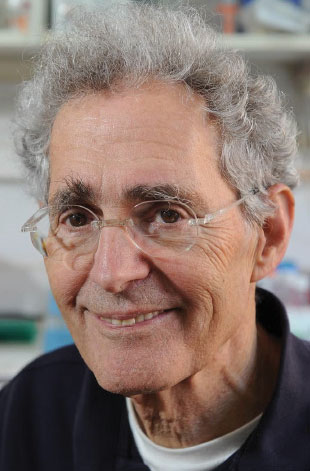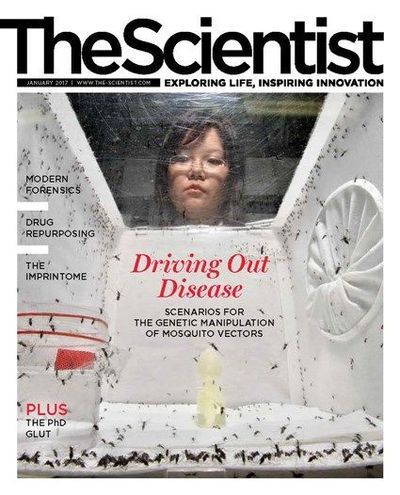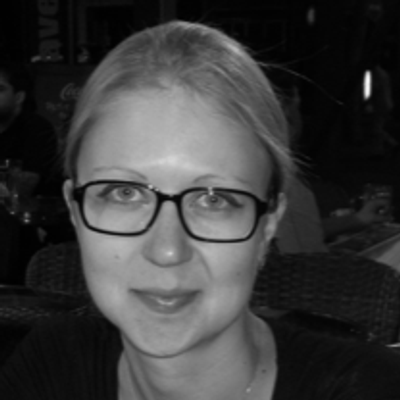 HOWARD (CHAIM) CEDAR
HOWARD (CHAIM) CEDAR
Professor of Molecular Biology, Faculty of Medicine, Hebrew University in Jerusalem, Israel© REUVEN KASTROIn 1963, when Howard Cedar was a junior-year physics major at MIT, a specific event changed the course of his life, he says. He had just gotten back a graded exam in an atomic physics course. “I got a 95 percent, but when I went over the exam, I noticed that for one of the questions, I had done the calculations correctly yet had written an answer that was about 30 orders of magnitude from the correct answer. The professor had seen that I had done the calculations and had just made a mistake in the final answer and I got almost full credit. But when I saw that, I said to myself, ‘How can you call yourself a physicist if you don’t know the difference between one and 10 to...
“Today, when we don’t know what causes a disease, we say it’s likely epigenetic. In a sense, I think this epigenetic viewpoint is right, but we need much more evidence to get a defined picture.”
Cedar then changed his plan to become a physicist and applied to medical school. “It was a practical decision. I thought I could be a good enough doctor.” Cedar entered New York University (NYU) in 1964. When he arrived, he learned about a brand-new six-year program initiated by the US government to support the training of MD/PhDs. “This was the first year of the program. I only heard about it when I arrived at NYU and leapt at the chance because the program paid for students’ tuitions. My parents were not wealthy and had difficulty paying for my tuition at MIT. I wanted to be independent and relieve some of the pressure on them.” Cedar was one of five students accepted to the NYU arm, and he became the first person in the U.S. to complete the newly minted national program. He then pursued an academic career, becoming a pioneer in the study of eukaryotic gene expression, figuring out the rules for how DNA methylation affects gene activity.
Here, Cedar recalls how his choice of a postdoc set him on a course to study DNA methylation and gene expression, why he chose to launch his laboratory in Israel despite advice to remain in the U.S., and what it’s like to preside over a family of six children and 22 grandchildren.
CEDAR'S CALLING
Logical beginnings. Cedar was born in Brooklyn in 1943, during World War II. “After the war, there were many new children and a lot of excitement. I grew up in a very encouraging and warm environment,” he says. Cedar’s father, who was born to immigrants from Poland, was a manager at a factory, and his mother, an immigrant from Ukraine, stayed home with him and his sister. As a child, Cedar loved math puzzles and problem solving. “My parents used to tell me that I would figure out the shortest route to get somewhere or the optimum time for an activity to be most efficient. This has remained part of my being throughout my life,” says Cedar. Attending high school in New Jersey after his father’s factory was relocated to Morristown, Cedar excelled in math and physics and in 1960 set off for MIT. “MIT was an amazing place for me,” says Cedar. “MIT had a philosophy that every student, no matter the major, needs to come out with a solid foundation in the basic sciences. I find myself still using that knowledge.”
Lab rat. Cedar says he was not the best student in NYU’s MD/PhD program, but he did enjoy learning about the life sciences. “I was infatuated with general biology principles. It was the beginning of the molecular biology revolution,” says Cedar. After three years of medical school and clinical rotations, Cedar chose to work with James Schwartz, who started at NYU as a microbiologist and then became a neurobiologist, using the sea slug Aplysia to study how memory works. Part of Schwartz’s research included examining how learning affects chromatin structure. Cedar was Schwartz’s first graduate student. “It’s very good to be the first graduate student; you get a lot of attention,” says Cedar. He studied E. coli’s synthesis of L-asparaginase, which catalyzes the hydrolysis of the amino acid asparagine to aspartic acid, and purified asparagine synthetase from the bacterium to study how that enzyme catalyzes the reverse reaction, using aspartate to produce the amino acid in vitro. Cedar enjoyed working in the lab and the make-your-own-hours lifestyle so much that, by end of his PhD, he decided to go the research route rather than practice medicine.
A blank slate. Cedar did a one-year internship in the neuroscience lab of future Nobel Laureate Eric Kandel, who was then at NYU, working on the role of cAMP metabolism in memory formation in Aplysia, and then obtained a research fellowship at the National Institutes of Health (NIH) in Bethesda, Maryland. At the NIH, Cedar chose to work with Gary Felsenfeld, whose lab was beginning to study the relationship between chromatin structure and gene expression. “It was a marriage made in heaven,” says Cedar, who initially didn’t know anything about chromatin or nucleic acids, he says. “Gary was a real pioneer in nucleic acid biochemistry and an exceptionally good chemist who had studied with Linus Pauling. He tried to apply this chemistry to biology. My entire understanding of the chemistry of nucleic acids, which not too many people learn anymore, I got from him.”
In 1971, when Cedar arrived at the NIH, scientists had not yet figured out chromatin’s structure because they did not know how to isolate it. “We knew there were histones but we didn’t know anything about nucleosomes, and we didn’t know that chromatin had a well-defined structure. Gary pioneered working with chromatin, but from a chemist’s perspective. We used sophisticated chemistry tools in his lab, but primitive ones for understanding biology.” When Cedar arrived, he began to perform some of the first experiments addressing the biology of chromatin.
Cedar figured out how to solubilize chromatin and used purified E. coli RNA polymerase to understand how the enzyme interacts with chromatin. In 1973, he published a paper describing an in vitro transcription system using either chromatin or protein-stripped DNA from the calf thymus. Cedar observed that initiation sites on chromatin are much less frequent compared to those on DNA, and that transcript elongation occurs three times more slowly on chromatin. “We learned a lot about the ways that chromatin restricts accessibility to RNA polymerase, which in a sense is a key element of chromatin—it restricts access. These were the first experiments to really show that,” says Cedar.
CEDAR CHURNS
A window into accessibility. After Richard Axel—a 2004 Nobel laureate—arrived in Felsenfeld’s lab to do a postdoc, he and Cedar set out to show that RNA polymerase has selective access to certain genes. They used a single-stranded piece of DNA that was complementary to transcripts of the globin gene to detect whether the transcript was forming in vitro. When they combined purified RNA polymerase with duck reticulocyte–derived chromatin in a test tube, the polymerase was able to transcribe the globin gene. In chromatin derived from other tissues, however, RNA polymerase did not produce a globin transcript. “The experiment was the first, really, to show that gene regulation is controlled by accessibility. What we had known about gene regulation had all come from bacteria, and this was a whole new concept that is now the basis of all gene regulation in eukaryotes,” says Cedar.
A major move. Cedar and his wife wanted to build a life for themselves and their two children in Israel, so after two years in the Felsenfeld lab, he applied for faculty positions there. “We went to Israel for idealistic reasons. We both wanted to be part of the new state that was established in 1948.” Cedar was offered and accepted a faculty position at the Hebrew University Medical School in Jerusalem in 1973. In his new lab, he continued to study how chromatin interacts with proteins in the cell and to investigate chromatin’s structure. Two years later, Roger Kornberg’s lab digested chromatin with micrococcal nuclease and ran the digest on a gel, showing repeated 200-base-pair nucleosome units. “Kornberg’s lab immediately saw the DNA ladder and that gave away the basic structure of chromatin. We didn’t have gels in Gary’s lab, we only used ultracentrifugation, which only gave us vague properties of chromatin.”
Epigenetics 101. At Hebrew University, Cedar began to focus on the role of DNA methylation in modulating gene expression. Since the 1940s, researchers had known that 5-methylcytosine is found in the genomes of prokaryotes and eukaryotes. In prokaryotes, DNA methylation serves as a way to protect the genome from the integration of foreign DNA. “That’s basically what was known about methylation. There was an idea going around that, maybe in animal cells, DNA methylation is involved in regulating genes, but it wasn’t based on much evidence. So we just basically started playing around with it,” says Cedar.
He teamed up with another faculty member, Aharon Razin, who was working on DNA methylation in bacteria, and in 1977 the two initially showed that 5-methylcytosine is concentrated in the parts of chromatin that are protected from nuclease digestion, suggesting a connection between methylation and a closed chromatin structure. Cedar and Razin next built a system to test whether DNA methylation can affect gene expression, using bacteria-derived restriction enzymes that do not cut DNA at methylated sites. Working together, the two labs introduced foreign methylated or unmethyated DNA into mammalian cells in culture and demonstrated, using the restriction enzymes, that methylated sites remained methylated after DNA replication in the daughter cells.
“We knew that about 80 percent of CG pairs in eukaryotic genomes were methylated, but we didn’t know how methylation was distributed, and we knew nothing about its metabolism,” says Cedar. “Our experiment showed that DNA methylation was a stable part of the genome and that it was not a random distribution of methylation but that it was specific.”
The how of methylation. Cedar and Razin next tackled the substrate for DNA methylation. Using purified eukaryotic DNA methylase, they showed that, in vitro, the enzyme prefers to methylate only the DNA strand already bearing the groups, suggesting that cells maintain strand symmetry of DNA methylation. Then, using gene transfer, the two labs showed that site-specific DNA methylation could inhibit transcription in mouse cells. Cedar’s lab also used DNA-targeting enzymes to show, genome-wide, that actively transcribed genes are generally undermethylated.
CEDAR CRESTS
Critical mark. In the 1990s, Cedar’s lab turned to understanding the dynamics of DNA methylation during early development. An earlier study had showed that levels of DNA methylation are lower in the preimplantation embryo than would have been predicted from the amount of DNA methylation in germ cells. In 1992, Cedar and Razin’s labs together provided more-concrete evidence that methylation marks are erased in the early embryo. In tissues, as recently as a year ago, it was not clear whether demethylation of a gene is required to turn on transcription. “This has been a big bone of contention, and a lot of critics were saying that demethylation is just part of the deactivation process, that you don’t really need it as long as the transcription factors are there,” says Cedar. In May 2016, along with Yehudit Bergman, also at Hebrew University, Cedar’s lab demonstrated in B cells that demethylation is indeed necessary for proper tissue-specific transcription, independent of transcription factors.
Driver of change. Cedar’s lab is now trying to address how environmental changes can modify patterns of DNA methylation using male and female mice. “The question is whether the environment can actually change the genome template in a stable manner. And I don’t think we really know the answer to that question, even though I would guess the answer is ‘yes.’ When I was a medical student, every time my professors didn’t know what caused a disease, they would say it was caused by a virus. Today, when we don’t know what causes a disease, we say it’s likely epigenetic. With this point of view, we get things wrong sometimes, which leads to some misconceptions. In a sense, I think this epigenetic view point is right, but we need much more evidence to get a defined picture [of how far epigenetic functions extend].”
Research personalities. “I came to Israel at point zero in my career. Many people told me that I was making a sacrifice to leave the U.S. because it was the real center of scientific activity, and that Israel was a new country that didn’t have a developed research infrastructure. Despite that, I went, and I was not disappointed. Israel turned out to be a powerhouse of science, but with a different scientific personality than that of the U.S. In the U.S., there is an emphasis on big science. Some of the best labs are big labs with a lot of postdocs and students and they tackle big problems, which you can only do with a lot of funding. In Israel, the labs are smaller and there is an emphasis on basic science, which changes the nature of the lab. It encourages younger students to be more involved, and they are allowed much more creative freedom.”
A tree grows. Cedar and his wife, a teacher and psychodramatist who treats children through group interventions, have six children, all living in Israel, and 22 grandchildren. Their oldest son is a screenwriter and director; another son is an epidemiologist. “The holidays, when we all get together, are very interesting. We all have a lot of fun together.”
Greatest Hits
- Demonstrated, with Richard Axel and Gary Felsenfeld, that chromatin can restrict transcription by globally blocking most of the genome while allowing access to specific genes
- Along with Aharon Razin, showed that methylated DNA is stably propagated to daughter cells following mitotic cell division, and outlined the mechanism by which methylation sites are maintained through cell division
- Was first to demonstrate that DNA methylation inhibits transcription and that undermethylated DNA is associated with actively transcribed genes
- Provided some of the first evidence for epigenetic reprogramming by proving that methylation patterns are erased in the early embryo
- Discovered the molecular rules involved in establishing DNA methylation patterns during development
Interested in reading more?





